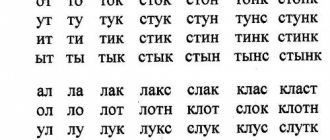When we talk about art and literary creativity, we are focused on the impressions that are created when reading. They are largely determined by the imagery of the work. In fiction and poetry, there are special techniques for enhancing expressiveness. A competent presentation, public speaking - they also need ways to construct expressive speech.
For the first time, the concept of rhetorical figures, figures of speech, appeared among the orators of ancient Greece. In particular, Aristotle and his followers were involved in their study and classification. Delving into the details, scientists have identified up to 200 varieties that enrich the language.
Means of expressive speech are divided according to language level into:
- phonetic;
- lexical;
- syntactic.
The use of phonetics is traditional for poetry. Musical sounds often predominate in a poem, giving poetic speech a special melodiousness. In the drawing of a verse, stress, rhythm and rhyme, and combinations of sounds are used for emphasis.
Lexical means of expression
The word is the basis of visual expressiveness of speech. Many words are often used not only in their direct lexical meaning. The characteristics of animals are transferred to the description of a person’s appearance or behavior - clumsy like a bear, cowardly like a hare. Polysemy (polysemy) is the use of a word in different meanings.
Homonyms are a group of words in the Russian language that have the same sound, but at the same time carry different semantic loads, and serve to create a sound game in speech.
Types of homonyms:
- homographs - words are written the same way, change their meaning depending on the emphasis placed (zamOk - zAmok);
- Homophones - words differ in one or more letters when written, but are perceived equally by ear (fruit - raft);
- Homoforms are words that sound the same, but at the same time refer to different parts of speech (I’m flying on an airplane - I’m treating a runny nose).
Puns are used to give speech a humorous, satirical meaning; they convey sarcasm well. They are based on the sound similarity of words or their polysemy.
Synonyms - describe the same concept from different sides, have different semantic load and stylistic coloring. Without synonyms it is impossible to construct a bright and figurative phrase; speech will be oversaturated with tautology.
Types of synonyms:
- complete - identical in meaning, used in the same situations;
- semantic (meaningful) - designed to give color to words (conversation);
- stylistic - have the same meaning, but at the same time relate to different styles of speech (finger);
- semantic-stylistic - have a different connotation of meaning, relate to different styles of speech (make - bungle);
- contextual (author's) - used in the context used for a more colorful and multifaceted description of a person or event.
Antonyms are words that have opposite lexical meanings and refer to the same part of speech. Allows you to create bright and expressive phrases.
Means of expression (table) material for preparing for the Unified State Exam (GIA, 9th, 11th grade) on the topic
Language means of expression.
Tropes are the use of a word in a figurative sense.
| List of tropes | Meaning of the term | Example | |
| Allegory | Allegory. A trope consisting in an allegorical depiction of an abstract concept using a concrete, life-like image. | In fables and fairy tales, cunning is shown in the form of a fox, greed - in the form of a wolf. | |
| Hyperbola | A means of artistic representation based on exaggeration. | The eyes are huge, like spotlights. | |
| Grotesque | Extreme exaggeration, giving the image a fantastic character. | The mayor with a stuffed head at Saltykov-Shchedrin. | |
| Irony | Ridicule, which contains an assessment of what is being ridiculed. A sign of irony is a double meaning, where the truth is not what is directly expressed, but its opposite, implied. | Where are you, smart one, coming from, head? (I. Krylov.) | |
| Litotes | A means of artistic representation based on understatement (as opposed to hyperbole). | The waist is no thicker than a bottle neck. (N. Gogol.) | |
| Metaphor, expanded metaphor | Hidden comparison. A type of trope in which individual words or expressions are brought together by the similarity of their meanings or by contrast. Sometimes the entire poem is an expanded poetic image. | With a sheaf of your oat hair You belong to me forever. (S. Yesenin.) | |
| Personification | This is an image of inanimate objects in which they are endowed with the properties of living beings, the gift of speech, the ability to think and feel. | What are you howling about, wind? night, Why are you complaining so madly? (F. Tyutchev.) | |
| Periphrase (or paraphrase) | One of the tropes in which the name of an object, person, phenomenon is replaced by an indication of its most characteristic features, enhancing the figurativeness of speech. | King of beasts (instead of lion) | |
| Synecdoche | A type of metonymy consisting in transferring the meaning of one object to another based on the quantitative relationship between them: part instead of the whole; whole in the meaning of part; singular in the meaning of general; replacing a number with a set; replacement of a specific concept with a generic one. | All flags will be visiting us. (A. Pushkin.); Swede, Russian stabs, chops, cuts. We all look at Napoleons. | |
| Comparison | A technique based on comparing a phenomenon or concept with another phenomenon. | The ice, hardened on the chilly river, lies like melting sugar. | |
| Epithet | Figurative definition; a word that defines an object and emphasizes its properties. | The grove dissuaded golden with Birch's cheerful tongue. | |
FIGURES OF SPEECH
A generalized name for stylistic devices in which a word, unlike tropes, does not necessarily have a figurative meaning.
| Figure | Meaning of the term | Example |
| Anaphora (or unity of command) | Repetition of words or phrases at the beginning of sentences, poetic lines, stanzas. | I love you, Petra’s creation, I love your strict, slender appearance... |
| Antithesis | Stylistic device of contrast, opposition of phenomena and concepts. Often based on the use of antonyms. | And the new so denies the old!.. It ages before our eyes! Already shorter than the skirt. It's already longer! |
| Gradation | Graduality is a stylistic means that allows you to recreate events and actions, thoughts and feelings in the process, in development, in increasing or decreasing significance. | I don’t regret, I don’t call, I don’t cry, Everything will pass like smoke from white apple trees. |
| Inversion | Rearrangement; a stylistic figure consisting of a violation of the general grammatical sequence of speech. | He passed the doorman like an arrow and flew up the marble steps. |
| Lexical repetition | Intentional repetition of the same word in the text. | Forgive me, forgive me, forgive me! And I forgive you, and I forgive you. I don’t hold any grudges, I promise you that, But only you will forgive me too! |
| Pleonasm | Repetition of similar words and phrases, the intensification of which creates a particular stylistic effect. | My friend, my friend, I am very, very sick. |
| Oxymoron | A combination of words with opposite meanings that do not go together. | Dead souls, bitter joy, sweet sorrow, ringing silence. |
| Rhetorical question, exclamation, appeal | Techniques used to enhance the expressiveness of speech. A rhetorical question is asked not with the goal of getting an answer, but for the emotional impact on the reader. | Where will you gallop, proud horse, and where will you land your hooves? (A. Pushkin.) What a summer! What a summer! Yes, it's just witchcraft. (F. Tyutchev.) |
| Syntactic parallelism | A technique consisting in similar construction of sentences, lines or stanzas. | I look to the future with fear, I look at the past with longing... |
| Default | A figure that leaves the listener to guess and think about what will be discussed in a suddenly interrupted statement. | You'll be going home soon: Look... So what? To tell the truth, no one is very concerned about my fate. |
| Ellipsis | A figure of poetic syntax based on the omission of one of the members of a sentence, easily restored in meaning. | We turned villages into ashes, cities into dust, and swords into sickles and plows. (V. Zhukovsky.) |
| Epiphora | A stylistic figure opposite to anaphora; repetition of a word or phrase at the end of poetic lines. | Dear friend, even in this quiet House Fever strikes me. I can’t find a place in a quiet House Near a peaceful fire. (A. Blok.) |
Expressive - emotional vocabulary
| Conversational. | Words that have a slightly reduced stylistic coloring compared to neutral vocabulary, are characteristic of spoken language, and are emotionally charged. | Dirty, loud, bearded. | |||
| Emotionally charged words | Evaluative in nature, having both positive and negative connotations. | Adorable, disgusting, villain | |||
| Words with suffixes of emotional evaluation. | Words with suffixes of emotional evaluation. | Cute, little bunny, little brain, brainchild. | |||
| PICTURE POSSIBILITIES OF MORPHOLOGY | |||||
| 1. Expressive use of case, gender, animation, etc. | Somehow I don't have enough air, I drink the wind, I swallow the fog... We are vacationing in Sochi. How many Plyushkins have divorced! | ||||
| 2. Direct and figurative use of verb tense forms | I came to school yesterday and saw a notice: “Quarantine.” Oh, I was so happy! | ||||
| 3. Expressive use of words from different parts of speech. | The most amazing story happened to me! I received an unpleasant message. I was visiting her. This cup will not pass you by. | ||||
| 4. Use of interjections and onomatopoeic words. | Here's closer! They gallop... and into the yard Evgeniy! "Oh!" — and lighter than a shadow, Tatyana jumped into another hallway. | ||||
SOUND EXPRESSIVENESS
| Means | Meaning of the term | Example |
| Alliteration | A technique to enhance imagery by repeating consonant sounds. | The hiss of foamy glasses and the blue flame of punch... |
| Alternation | Alternation of sounds. Change of sounds that occupy the same place in a morpheme in different cases of its use. | Tangent - touch, shine - shine. |
| Assonance | A technique to enhance imagery by repeating vowel sounds. | The thaw is boring to me: the stench, the dirt, in the spring I am sick. (A. Pushkin.) |
| Sound recording | A technique for enhancing the visual power of a text by constructing phrases and lines in a way that would correspond to the picture being reproduced. | For three days I could hear how on the long, boring road the joints were clicking: east, east, east... (P. Antokolsky reproduces the sound of carriage wheels.) |
| Onomatopoeia | Using the sounds of language to imitate the sounds of living and inanimate nature. | When the mazurka thunder roared... (A. Pushkin.) |
PICTURE POSSIBILITIES OF SYNTAX
| 1. Rows of homogeneous members of a sentence. | When an empty and weak person hears flattering feedback about his dubious merits, he revels in his vanity, becomes arrogant and completely loses his tiny ability to be critical of his actions and his person. |
| 2. Sentences with introductory words, appeals, isolated members. | Probably, there, in my native places, just as in my childhood and youth, the baths bloom in the swampy backwaters and the reeds rustle, making me with their rustle, with their prophetic whispers, the poet that I became, that I was, that I will be, when I die. |
| 3. Expressive use of sentences of various types (complex, complex, non-union, single-part, incomplete, etc.). | They speak Russian everywhere; this is the language of my father and my mother, this is the language of my nanny, my childhood, my first love, almost all the moments of my life that entered my past as an integral property, as the basis of my personality. |
| 4. Dialogic presentation. | - Well? Is it true that he is so good-looking? - Surprisingly good, handsome, one might say. |
| 5. Parcellation is a stylistic technique of dividing a phrase into parts or even individual words in a work in order to give the speech intonation expression through its abrupt pronunciation. | Liberty and Fraternity. There will be no equality. Nobody. No one. Not equal. Never. (A. Volodin.) He saw me and froze. Numb. He fell silent. |
| 6. Non-union or asyndeton - deliberate omission of conjunctions, which gives the text dynamism and swiftness. | Swede, Russian stabs, chops, cuts. People knew: somewhere, very far from them, there was a war going on. If you are afraid of wolves, do not go into the forest. |
| 7. Polyconjunction or polysyndeton - repeating conjunctions serve to logically and intonationally emphasize the parts of the sentence connected by the conjunctions. | The ocean walked before my eyes, and swayed, and thundered, and sparkled, and faded, and glowed, and went somewhere into infinity. I will either burst into tears, or scream, or faint. |
Defining Tropes
| Trails | Definition |
| Allegory | Allegorical words and expressions that convey the essence and main features of a particular image. Often used in fables. |
| Hyperbola | Artistic exaggeration. Allows you to vividly describe properties, events, signs. |
| Grotesque | The technique is used to satirically describe the vices of society. |
| Irony | Tropes that are designed to hide the true meaning of an expression through slight ridicule. |
| Litotes | The opposite of hyperbole is that the properties and qualities of an object are deliberately understated. |
| Personification | A technique in which inanimate objects are attributed the qualities of living beings. |
| Oxymoron | Connection of incompatible concepts in one sentence (dead souls). |
| Periphrase | Description of the item. A person, an event without an exact name. |
| Synecdoche | Description of the whole through the part. The image of a person is recreated by describing clothes and appearance. |
| Comparison | The difference from metaphor is that there is both what is being compared and what is being compared with. In comparison there are often conjunctions - as if. |
| Epithet | The most common figurative definition. Adjectives are not always used for epithets. |
Metaphor is a hidden comparison, the use of nouns and verbs in a figurative meaning. There is always no subject of comparison, but there is something with which it is compared. There are short and extended metaphors. Metaphor is aimed at external comparison of objects or phenomena.
Metonymy is a hidden comparison of objects based on internal similarity. This distinguishes this trope from a metaphor.
Phonetic means
The term phonetic comes from the Greek word φωνή, which means “sound.” We are not talking about any sound - the knocking of a hammer, the barking of a dog or the rustling of leaves are not included in the scope of interests of phonetics; it deals with the sounds of human speech. Accordingly, phonetic means of expressiveness are based on the perception of speech sounds - phonemes.
There are three main phonetic means of expression.
- Alliteration. It implies the use of the same type of consonant sounds in a limited passage of text (for example, within a quatrain).
The forest slumbers under the fairy tale of sleep. (S. Yesenin)
A variant of the technique is the use of words starting with the same letter - “Scandinavian alliteration”, which is especially popular in English-language literature. An example is, in particular, the characters of “Harry Potter” by J. Rowling, whose first and last names begin with the same letter (Severus Snape, Hermione Granger, etc.), or posters with public service announcements from “The End of a Chapter” by J. Galsworthy (“ The betting is a waste of thousands."
- Assonance. Using the same vowel sounds within a line, stanza, or sentence.
Breathing in perfumes and mists, she sits by the window. (A. Blok)
- Onomatopoeia. Transmission using phonetic means of sounds of the surrounding world - thunderclaps, the sound of horse hooves on cobblestones, the rustling of tires on the road or mice in the underground.
And the thunder roared continuously, and the winds raged in the wilds. (K. Ryleev)
The use of phonetic techniques is called sound writing, since with the help of the selection of phonemes in a literary work, a bright, “voiced” picture is drawn that stimulates the reader’s imagination.
Paronyms - what are they, examples
Types of stylistic figures
| Name of syntactic structure | Description |
| Anaphora | Using the same syntactic constructions at the beginning of adjacent sentences. Allows you to logically highlight a part of the text or a sentence. |
| Epiphora | Using the same words and expressions at the end of adjacent sentences. Such figures of speech add emotionality to the text and allow you to clearly convey intonation. |
| Parallelism | Constructing adjacent sentences in the same form. Often used to enhance a rhetorical exclamation or question. |
| Ellipsis | Deliberate exclusion of an implied member of a sentence. Makes speech more lively. |
| Gradation | Each subsequent word in a sentence reinforces the meaning of the previous one. |
| Inversion | The arrangement of words in a sentence is not in direct order. This technique allows you to enhance the expressiveness of speech. Give the phrase a new meaning. |
| Default | Deliberate understatement in the text. Designed to awaken deep feelings and thoughts in the reader. |
| Rhetorical appeal | An emphatic reference to a person or inanimate objects. |
| A rhetorical question | A question that does not imply an answer, its task is to attract the attention of the reader or listener. |
| Rhetorical exclamation | Special figures of speech to convey expression and tension of speech. They make the text emotional. Attract the attention of the reader or listener. |
| Multi-Union | Repeated repetition of the same conjunctions to enhance the expressiveness of speech. |
| Asyndeton | Intentional omission of conjunctions. This technique gives the speech dynamism. |
| Antithesis | A sharp contrast of images and concepts. The technique is used to create contrast; it expresses the author’s attitude towards the event being described. |
Tropes, figures of speech, stylistic means of expression, and phraseological statements make speech convincing and vivid.
Such phrases are indispensable in public speeches, election campaigns, rallies, and presentations. In scientific publications and official business speech, such means are inappropriate - accuracy and persuasiveness in these cases are more important than emotions. Previous articlePreviousNext articleNext
Figures of speech
Stylistic figures are also used in literature. Their main types are shown in the table:
| Repeat | At the beginning, end, at the junction of sentences | This cry and the lines, these flocks, these birds |
| Antithesis | Opposition. Antonyms are often used. | Long hair, short mind |
| Gradation | Arrangement of synonyms in increasing or decreasing order | Smolder, burn, glow, explode |
| Oxymoron | Connecting contradictions | A living corpse, an honest thief. |
| Inversion | Word order changes | He came late (He came late). |
| Parallelism | Comparison in the form of juxtaposition | The wind stirred the dark branches. Fear stirred in him again. |
| Ellipsis | Omitting an implied word | By the hat and out the door (he grabbed it and went out). |
| Parcellation | Dividing a single sentence into separate ones | And I think again. About you. |
| Multi-Union | Connecting through repeating conjunctions | And me, and you, and all of us together |
| Asyndeton | Elimination of unions | You, me, he, she – together the whole country. |
| Rhetorical exclamation, question, appeal. | Used to enhance feelings | What a summer! Who if not us? Listen, country! |
| Default | Interruption of speech based on a guess, to reproduce strong excitement | My poor brother...execution...Tomorrow at dawn! |
| Emotional-evaluative vocabulary | Words expressing attitude, as well as direct assessment of the author | Henchman, dove, dunce, sycophant. |





